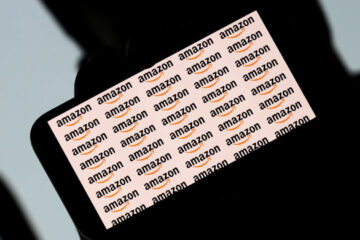Scoring deals — either for those you love or for yourself — has become as much of a holiday tradition as putting up a Christmas tree, making Black Friday one of the most important sales days for retailers.
Taking place the day after Thanksgiving, Black Friday traditionally begins the holiday shopping season. According to Adobe Analytics, shoppers are expected to drop $40.6 billion in 2024, with 75% percent of consumers planning to take advantage of deep deals and discounts online — so much so that Adobe has called the 2024 holiday season “the most mobile of all time.”
This might come as a surprise since, as recently as even a few years ago, shoppers had to leave their Thanksgiving tables to stand outside in midnight lines to score a deal on a hot toy or new TV.
Related: How much does the Macy’s Thanksgiving Day Parade cost & who pays for it?
Now, data shows that most Black Friday shopping takes place from the warm glow of shoppers’ smartphone screens.
By combing through more than 100 trillion online transactions, Adobe reported that shoppers spent $221.8 billion online over the 2023 holiday season. This year, it forecasts a sales increase of 12.8% from mobile sales platforms to $240.8 billion, with the deepest discounts expected to hit during Black Friday weekend.
Adding further proof, one of the country’s biggest credit card companies, Capital One, reports that Black Friday shoppers are 18.9% more likely to purchase online than in-store.
Don’t get us wrong: In-store opportunities remain for Black Friday purists who still thrill at the thought of (literally) getting their hands on a hot item, particularly “doorbusters,” or limited-availability items, like electronics and appliances.
But those who break out in hives at the thought of Black Friday crowds can now often find just as good deals online — with a wider selection to choose from, too.
💰💸 Don’t miss the move: SIGN UP for TheStreet’s FREE Daily newsletter 💰💸
Even the definition of Black Friday has undergone an evolution recently, expanding from a single sales day to into a week-long sales event now called Cyber Week — and sales at some of the biggest retailers like Target (TGT) , Walmart (WMT) , Best Buy (BBY) , and Amazon (AMZN) are already underway.
View the original article to see embedded media.
A history of Black Friday, both in stores and online
Black Friday is historically known as the best sales day of the year, when retailers roll out steep, limited-time discounts on some of their most popular products.
However, like most days that have the word “black” in them, the first Black Friday actually wasn’t good; it referred to a financial crisis that took place in 1869, when railway magnate James Fisk and financier Jay Gould tried to corner the gold market. A panic ensued, causing gold prices to plummet, ruining many speculators in the process.
In the 1950s, the “Factory Management and Maintenance” journal used the term Black Friday to refer to workers who called in sick the day after Thanksgiving in order to enjoy a four-day weekend.
By the 1960s, the Philadelphia Police Department had caught wind of the phrase and used it to describe the hordes of suburban shoppers who traveled to department stores downtown; some were naughty, while others were nice.
By the 1980s, perceptions surrounding Black Friday had shifted, with the “black” in Black Friday referring to the moment when retail ledgers were no longer operating at a loss, or “in the red,” but rather became profitable, or “in the black.”
Related: Buy now, pay later apps: Are Affirm, Afterpay, Klarna & more safe?
Black Friday officially marked the start of the holiday shopping season, and during the Reagan Era, consumer spending increased dramatically — as did credit card debt. In 1980, the average credit card debt was only $500 per household; by 1990, it had ballooned to $3,000.
According to The New York Times, “shopping became almost a 24/7 activity,” and retailers could mint astounding profits on a single sales day like Black Friday.
This led stores to come up with ever-more-creative ways to attract buyers, advertising doorbuster deals and offering extended hours to entice shoppers inside their stores instead of their competitors’.
Shoppers wait in a long line outside a store on Black Friday, 2013.
Wikimedia photo Powhusku, CC BY-SA 2.0, via Wikimedia Commons
By the 1990s, stores were opening earlier and earlier on Black Friday; customers started camping outside on Thanksgiving night so they could be the first ones in line.
In order to improve morale, and possibly encourage even more economic growth, many states even started offering Black Friday as a paid, post-Thanksgiving holiday:
States that offer Black Friday as a holiday
CaliforniaDelawareFloridaGeorgiaIllinoisIowaKansasKentuckyMaineMarylandMichiganMinnesotaNebraskaNevadaNew HampshireNew MexicoNorth CarolinaOklahomaOregonPennsylvaniaSouth CarolinaTennesseeTexasVirginiaWashingtonWest Virginia
Source: Newsweek
According to the U.S. Bureau of Labor Statistics, 97% of civilian and private industry employers also give their workers the day off on Black Friday, although employers of service occupations, like food and retail, usually do not.
Black Friday shopping tragedies
Shopping online on Black Friday isn’t just convenient; it’s also safer.
That is because if you bring a bunch of people together over a limited supply of items high up on everyone’s Christmas list, trouble’s bound to happen.
Between 2006 and 2018, over 100 people were injured — and 11 people died — from Black Friday-related violence. In 2008, a Walmart employee was trampled to death in Long Island as frenzied shoppers pushed through the store’s front doors.
In 2011, at another Walmart in North Carolina, 20 people were injured when an off-duty cop sprayed pepper spray into the crowd. Shoppers said a man had accidentally stumbled into a display of discounted cell phones, but security believed a fight had broken out.
You don’t even have to go inside stores to find Black Friday-related expressions of rage; in 2012, outside a Walmart in Tallahassee, Fla., two people were shot in a dispute over a parking space. Emergency workers found the victims in the garden center before transporting them to the hospital.
Online retailers, like Amazon, forever changed Black Friday shopping.
ArtistGNDphotography; Getty Images
How Amazon changed Black Friday shopping
By the 2000s, the rise of the Internet, personal computers, and new e-commerce platforms were dramatically transforming the way people shopped.
Amazon started out as an online bookseller with the (very) smart idea to offer buyers a wide selection of products with low prices and faster delivery than anyone else. Sales skyrocketed, so Amazon branched out into other niches, selling music and DVDs, then adding home-improvement items, software, clothing, electronics, and toys — basically everything under the kitchen sink — including kitchen sinks.
A tipping point moment for Amazon — and shopping in general — happened in 2005, when Amazon launched its Prime Membership. In just 10 years, this “free” next-day delivery subscription service had amassed 50 million Prime customers, and to celebrate the platform’s decade in business, Amazon created Prime Day.
Taking place on July 15, 2015, Prime Day lasted 24 hours and included even better deals than Black Friday 2014, which was its biggest sales day to date.
“Going into this, we weren’t sure whether Prime Day would be a one-time thing or if it would become an annual event. After yesterday’s results, we’ll definitely be doing this again.”
—Greg Greeley, Vice President, Amazon Inc., July 16 2015
Prime Day sales leapfrogged past Black Friday records by 18%. “Customers worldwide ordered an astonishing 398 items per second and saved millions on Prime Day deals,” Amazon Prime Vice President Greg Greeley breathlessly reported.
Black Friday shopping would never be the same.
COVID-19’s effect on in-store and online shopping
The global pandemic further shifted shopping online, with CNN reporting that more than half of consumers felt anxious about browsing shelves in stores again over Black Friday weekend in 2020.
In response, retailers began offering their best deals online rather than encouraging shoppers to congregate, and they added additional incentives by starting their holiday sales earlier and ending them later, too. Black Friday deals began appearing online as early as November 1 at Best Buy, Home Depot (HD) , Target and Walmart.
Black Friday 2024: In-store AND online
Today, shoppers can enjoy the best of all worlds. Most customers feel safe rubbing elbows again and can visit stores to avoid the hassle of delivery delays or items going on backorder. They can also browse the widest selection possible — and still save big — by shopping online.
Retailers are continuing to run week or even month-long sales promotions to boost their bottom lines, and some stores are even offering price-match adjustments, so you can basically enjoy Black Friday deals all season long.
Target, for instance, will price-match items bought in stores or online between November 7 and December 24, 2024.
All you need to do is save your receipts and contact customer service, and they’ll refund you the difference.
Here are a few other Black Friday deals we’ve rounded up:
Amazon is selling a $130 ‘wonderfully clear’ video doorbell for only $30 during its Black Friday saleMacy’s is selling a ‘quality’ $140 travel backpack for just $56 during its Black Friday saleWalmart’s bestselling $100 Bluetooth headphones with 5,000+ perfect ratings are only $25 for Black FridayAmazon is selling a $300 Levoit air purifier for only $150, and shoppers say it provides a ‘better quality of life’Walmart’s bestselling $300 mini fridge that ‘works flawlessly’ is on sale for only $111 for early Black Friday
Related: Veteran fund manager sees world of pain coming for stocks


